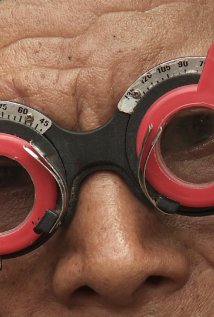NYFF: Syria Plays Itself in 'Self-Portrait'
 Monday, October 6, 2014 at 1:00PM
Monday, October 6, 2014 at 1:00PM New York Film Festival is going strong and here is Glenn on one of the finest works of non-fiction at the fest.
 A young boy named Omar walks through the rubble-strewn streets of Syria followed by a woman with a camera. He picks flowers, his eyes pop at something as simple as the size of a plant’s leaves, and giggles as his inquisitive mind asks questions to his unseen follower. The boy then tells the woman with the camera that they shouldn’t go down a certain street because there are snipers down there. It is spoken with such nonchalance by the child that one might assume he’s just re-enacting dialogue from a computer game or perhaps a movie. Rather it's just an average day in the life of this child as he navigates his way through his hometown of Homs.
A young boy named Omar walks through the rubble-strewn streets of Syria followed by a woman with a camera. He picks flowers, his eyes pop at something as simple as the size of a plant’s leaves, and giggles as his inquisitive mind asks questions to his unseen follower. The boy then tells the woman with the camera that they shouldn’t go down a certain street because there are snipers down there. It is spoken with such nonchalance by the child that one might assume he’s just re-enacting dialogue from a computer game or perhaps a movie. Rather it's just an average day in the life of this child as he navigates his way through his hometown of Homs.
This is a moment, a very confronting one, from Silvered Water, Syria Self-Portrait and the woman with the camera is Wiam Bedirxan. She is a young Kurdish activist and school teacher trapped in her home-country under heavy fire and also the co-director of this rather exceptional documentary who worked in collaboration via Facebook, Gchat and Skype with the politically exiled Ossama Mohammed who had previously fled to France and made this movie by compiling video from a reported 1001 Syrians who filmed the deadly revolution of their country on mobile phones and with photographs, uploaded to the internet platforms like YouTube, effectively creating a patchwork of a self-portrait of this nation under siege.
The conceit is a brave one especially given the quality of many of the images – footage, especially early on, is taken by Syrian men and women on the run from bullets, shelling and blood-loss; in one scene somebody gives chase after their phone, constantly filming, is nabbed by a passerby only to turn a corner and discover the thief has been shot and killed – and yet it is one that entirely works. It’s perhaps crude and the boxy, mis-shapen, heavily pixilated footage is rough around the edges, but it’s that very personal take from the frontlines that makes the documentary work. The assemblage is captivating and paints a picture that feels both broad and intimate at the same time.

Punctuated by somewhat cryptic title-cards and interspersed with even-harder-to-watch footage of maimed felines and youths being tortured that should wrench tears even out of audiences who feel desensitized by the onslaught of grim Syrian news. I could have done without the familiar bubbling sound of Skype that appears increasingly in the film’s tail-end, but the way it presents a country at a terrible crossroads is fresh and unique, penetrating through the glut of war documentaries in much the same way as The Square (albeit less accessible – Netflix won’t be acquiring this one). B+
Silvered Water, Syria Self-Portrait screens on Wednesday Oct 8 (6.15pm)
 NYFF,
NYFF,  documentaries
documentaries 








